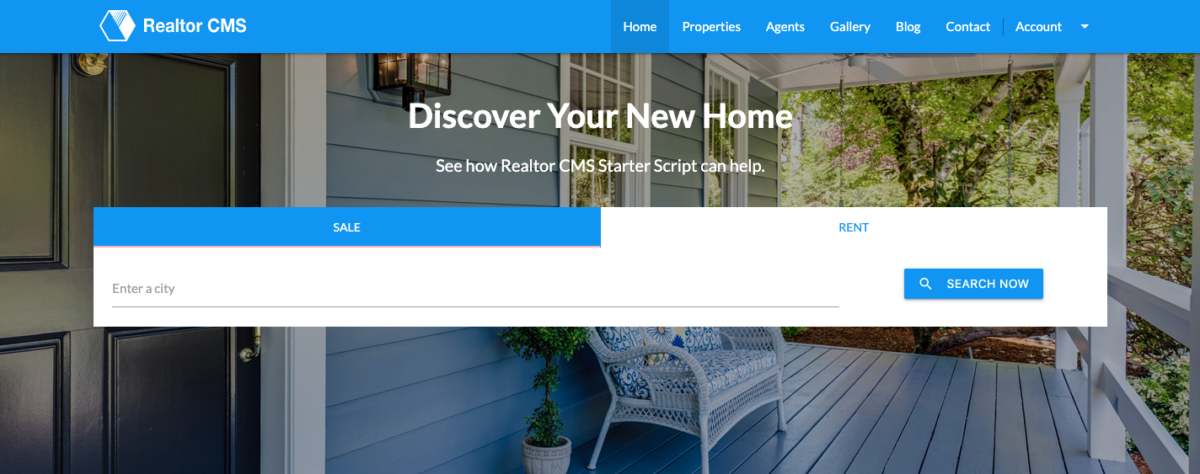Introduction
Real Estate CMS Starter Script is a real-estate property management system web application based on PHP and Laravel Framework. Real Estate CMS was born to be the real estate listing solutions. Specifically designed and implemented for easy use and fast customization based upon existing code.
The script is made after deep analysis and elegant design. This script is made for specific real estate users. It consists of all parts which are required while creating a new real estate agency website. Script have features like agents/users registration, property listing/search, comment/rating, contact form, message, email notification, google map, blog, etc. The script comes with an admin dashboard, and the front-end website can be configured to 20 color themes. Try our demo.
Demo
- Homepage: https://realtorcms.startbizinvoice.com
- Login: https://realtorcms.startbizinvoice.com/login
- Sign up: https://realtorcms.startbizinvoice.com/register
- Admin: johnboston@mail.com / 123456
- Agent 1: damon.odqw@hotmail.com / 123456
- Agent 2: eduardo.buwi@yahoo.com / 123456
- Agent 3: evie.zvma@gmail.com / 123456
- User 1: cleve.yibw@gmail.com / 123456
- User 2: diana.irom@gmail.com / 123456
- User 3: elisha.ghjw@hotmail.com / 123456
Features
Administrator Dashboard
Real Estate CMS provides a user-friendly and modern designed administrator dashboard for a website owner to handle all tasks including manage categories, messages, properties, categories, blogs, website interfaces, and other website settings.
Multiple Roles
Real Estate CMS has 3 roles (admin, agent, user). Each role provides relevant functions best suit for a real estate agency to manage its employees and clients in one web application.
Requirement
- Apache Web Server.
- PHP >= 7.2.0
- MySQL >= 5.6
- BCMath PHP Extension
- Ctype PHP Extension
- Fileinfo PHP extension
- JSON PHP Extension
- Mbstring PHP Extension
- OpenSSL PHP Extension
- PDO PHP Extension
- Tokenizer PHP Extension
- XML PHP Extension
Installation Guide
Make sure
publicfolder has permission755. Some hosting vendors prohibit775or777access, and may throw 500 HTTP internal error.
- Upload
real_estate_cms.zipintopublic_htmlor otherhtmlroot depends on your web server. - Unzip
real_estate_cms.zip. - Create a database on your web server (database name, database user, database password will be used in the next installation process).
- Create
.envfrom.env.exampleand update your database credentials. - Make sure
APP_URLin.envis correct your domain. It should beAPP_URL=http://your-domain.com - (Optional) Configure Email Sender in
.env(MAIL_FROM_ADDRESS,MAIL_FROM_NAME) - (Optional) Configure SMTP in
.env(MAIL_HOST,MAIL_PORT,MAIL_USERNAME,MAIL_PASSWORD,MAIL_ENCRYPTION) - Go to
http://your-domain.com/installand register admin account. - That’s all.
